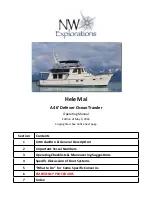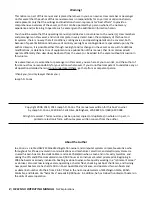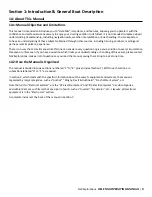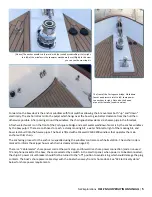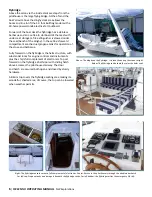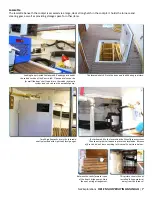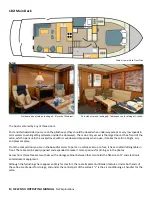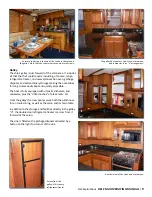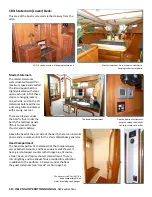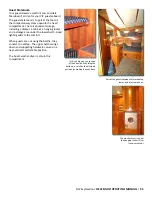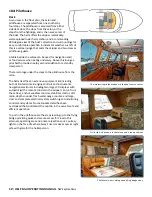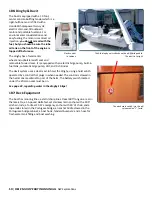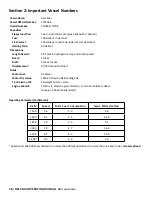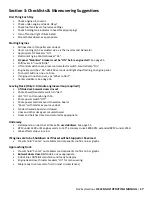
NW Explorations
HELE MAI OPERATING MANUAL
|
5
Forward on the bow deck is the anchor windlass with foot switches allowing chain movement both “up” and “down”
electrically. The anchor retracts into the pulpit which hangs over the bow to give better clearance from the hull than
otherwise possible. After passing around the windlass, the chain goes below decks via a hawse pipe in the foredeck.
A fresh water faucet is on the front of the Portuguese bridge and a salt water washdown faucet is by the anchor windlass
by the bow pulpit. There are coil hoses for each, a sturdy mooring bit; a water fill inlet to right of the mooring bit, and
bow cleats built into the hawse pipes. The boat is fitted with a Maxwell VMC-2200 windlass that operates the main
anchor with its chain.
The anchoring process for the anchor is expedited using the windlass controls at each helm station. The anchor rode is
marked to inform the skipper how much chain is deployed (see page 22).
There is a “Cablemaster” shore power cord at the swim step, and forward is a shore power connection (and an unused
TV and phone socket) at the bow; these are selected by a switch in the electric panel; when power is to be disconnected,
the ship AC power circuit breaker should first be turned to the “off” position to avoid arcing which could damage the plug
contacts. The boat’s shore power cable stays with the boat when away from its home dock. See “AC Electrical Systems”
below for shore power requirements.
(Above) The anchor windlass is forward, with foot switches controlling it to its right.
Just left of the windlass is the seawater washdown faucet.(Right) In this view
you can see the mooring bit.
The front of the Portuguese bridge. Washdown
faucet and pressure inlet to left, shore power
connections to right. Note also the hawse
pipe with cleat and fender camcleat.

